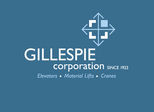- Glenn Siegel
- May 28
The web of connections we discover as we interact with our fellow human beings, what we sometimes call “small-world” phenomenon, creates both surprise and comfort. Vocalist and pianist Lisa Sokolov, who performed on May 24 at the Institute For the Musical Arts with Jake Sokolov-Gonzalez, has relatives named Siegel. We were born 12 miles and 30 days apart into New York Jewish families. One of her closest musical allies, William Parker, is a hero of mine whom I will present in concert on June 12th for the 15th time. Jake’s friend JaMario Stills, whom he met at Brown University, teaches at Amherst College and is a theater colleague of Priscilla Page, my wife. And on it goes.
We were 40 in the big barn at IMA in Goshen, MA. It felt like a prayer session. The music flowed from melody to melody, sometimes with brief pauses between pieces; the sound was pure. The poems, written by Muriel Rukeyser, Yip Harburg, William Parker and Sokolov, among others, celebrated love, explored life’s mysteries, cried out for peace and justice, and ridiculed greedy despots. Unsure if we were at a concert or a religious ceremony, we didn’t know whether to applaud or not. We did so weakly, in spots. At the end, of course, we erupted with full-throated approval.
Were we in a secular or sacred space? It stands to reason we were confused by the ambiguity of the moment. Sokolov knows a thing or two about the power of the human voice. She has been using it as a healing modality for over 40 years. Since the early 1980s she has taught music therapy and her Embodied Voicework method at NYU, where she is a full professor in the University’s Tisch School of the Arts. She’s also a cantor. On Saturday she sang “Hashiveinu”, a beautiful melody that is part of the Yom Kippur service.
Sokolov studied with avant-garde jazz masters Bill Dixon, Milford Graves and Jimmy Lyons at Bennington College, where in March, she participated in a 50 year celebration of the school’s Black Music Department. After college and a short stay in Paris, she moved to New York in 1977 where she quickly fell in with bassist William Parker and fellow vocalists Ellen Christi and Jeanne Lee. Soon she was part of the scene at Studio Henry, a cooperative performance space in lower Manhattan that she built with John Zorn, Elliot Sharp, Wayne Horvitz, Robin Holcomb and others.
After her own Jazz Shares performance at IMA in 2023, Holcomb encouraged Sokolov to contact me for a gig. The introverted Sokolov equivocated at first, but with a second push from Holcomb she relented; we thank the spirits she did.
But it was an easy ask. Nestled between Soft Machine and Martial Solal in my record collection were Lazy Afternoon, Presence and A Quiet Thing, three cherished Lisa Sokolov recordings. Also in the stacks were Gerry Hemingway’s Songs and William Parker’s Stan’s Hat Flapping in the Wind, both of which prominently feature the vocalist. I understood the upside of saying “yes”, and the addition of her son, Jake Sokolov-Gonzalez was the cherry on top.
A cellist blessed with a clarion tone and a fertile imagination, Sokolov-Gonzalez also experiments with electronics, film and performance art. He’s a year away from earning his PhD in Music and Multimedia Composition from Brown. He also cooperatively runs Pyxis, a performance/gathering space in Providence. Joining his mother in rich harmony and in plucked response to her darting flights, he grounded the proceedings with earthly resonance. It was the first inter-generational family band I’ve presented since Joe and Mat Maneri in 2004. In both instances, there was a special rapport.
“Like a pebble dropping into water,” she sang at the beginning of the evening, “tone is the rippling of waves through this ocean of air. Our ears translate these undulations into our experience of tone, activating trees of overtones, activating trees of overtones…” We were off and running.
“Take it to your heart,” she sang towards night’s end, “know and understand, that this world is merely a thin and narrow bridge. You need never be afraid, you need never be afraid.” And then in a remarkable coda, she revisited phrases she intoned throughout the concert. “Bring peace down” were her last whispered words.
When we got home after the post-concert reception, I played Tala, Terry Jenoure’s brand new release for Sokolov. I have long heard similarities in their sound and approach. She was pleased and impressed and unaware of Jenoure’s work. I was glad to create another strand in the web.



























